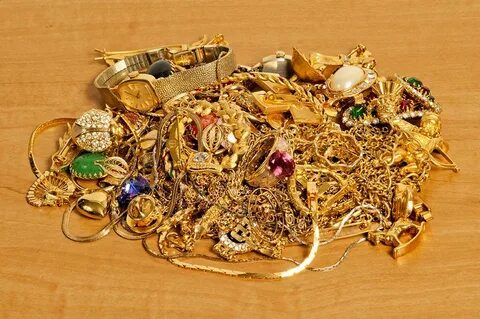Egyptians have recently made an astounding discovery in a recent excavation, unearthing ancient gold treasures that have captivated the world. The unearthing of these precious artifacts sheds new light on the fascinating history of Egyptians and their love for gold. Join us as we delve into the incredible findings and their significance in unraveling the mysteries of ancient Egyptian culture.
Archaeologists in Egypt have recently uncovered a collection of ancient gold treasures at the site of the Pharaonic Temple of Millions of Years in Luxor. The discovery consists of a total of 54 rare coins, along with a large 16th-century gold ring and a small amulet. These artifacts are believed to date back to the Ptolemaic period and are likely to provide valuable insights into the history and culture of ancient Egypt. The excavation was conducted by a team from the Egyptian Ministry of Antiquities, and the findings are expected to shed light on the economic and trading activities of the time. This discovery is just one of many recent archaeological breakthroughs in Egypt, highlighting the country’s rich cultural heritage and its ongoing importance in the field of archaeology.
The Ancient Egyptian Love Affair with Gold

The Ancient Egyptians were fascinated with gold and considered it to be a divine and indestructible metal. They believed that gold was the flesh of the gods and used it to adorn religious idols and decorate temples. Gold was also thought to have protective properties and was often buried with the dead to ensure safe passage to the afterlife.
The pharaohs and nobility of Ancient Egypt adorned themselves with elaborate gold jewelry and headdresses, using it as a symbol of their power and status. Gold was also used in the construction of ornate furniture, sarcophagi, and ceremonial objects, showcasing its importance in Egyptian society.
The exorbitant wealth of the Egyptian elite is evident in the elaborate burials and treasures found within their tombs, including vast amounts of gold jewelry, ornaments, and even gilded coffins. The allure of gold extended beyond the aristocracy, as everyday objects like mirrors, combs, and even teeth were also adorned with the precious metal.
The Ancient Egyptian love affair with gold was not only about its material value, but also about its spiritual and symbolic significance. Its association with the gods, immortality, and power made it an integral part of Egyptian culture and society. The legacy of this reverence for gold is evident in the artifacts and treasures that have been unearthed, providing a glimpse into the opulence and splendor of Ancient Egypt.
Uncovering the Mysteries of Egyptian Gold Jewelry

“Uncovering the Mysteries of Egyptian Gold Jewelry” is a comprehensive exploration of the significance and craftsmanship of ancient Egyptian gold jewelry. The book delves into the cultural, religious, and historical context of these artifacts, shedding light on the materials, techniques, and symbolic meanings associated with them. Through detailed analysis and illustrations, readers gain a deeper understanding of the intricate designs and the expertise of ancient Egyptian goldsmiths. This book is a valuable resource for scholars, enthusiasts, and anyone with an interest in the art and culture of ancient Egypt.
The Role of Gold in Ancient Egyptian Burial Practices

Gold played a significant role in the burial practices of ancient Egypt. It was considered to be a divine metal, associated with the sun god Ra and the eternal life of the afterworld. The use of gold in burial rituals reflected the belief in the afterlife and the importance of preserving the body and soul for eternity.
Gold was used to create elaborate burial masks, jewelry, and other funerary items for the deceased. These items were believed to protect the deceased in the afterlife and were often placed within tombs and sarcophagi. The most well-known example of this is the burial mask of Tutankhamun, which was made of gold and adorned with precious gems.
The presence of gold in ancient Egyptian burials also reflected the wealth and status of the deceased. Those who could afford to be buried with gold items were often members of the elite ruling class or high-ranking officials. The use of gold in funerary practices served as a way to display the wealth and power of the deceased and their commitment to ensuring a prosperous afterlife.
Overall, gold played a crucial role in the burial practices of ancient Egypt, symbolizing both spiritual significance and social status. Its use in funerary rituals reflects the deep-rooted beliefs in the afterlife and the importance of preserving the body and soul for eternity.
Egyptian Pharaohs and their Golden Treasures

The ancient Egyptian pharaohs were known for their opulent golden treasures, which included items such as jewelry, furniture, and burial artifacts. Gold was highly prized in ancient Egypt and was used to symbolize the pharaoh’s power and divine status.
Some of the most famous golden treasures associated with the Egyptian pharaohs include the funerary mask of Tutankhamun, which is made of solid gold, and the golden sarcophagus of King Tut, which was found within his tomb in the Valley of the Kings. The pharaohs also owned elaborate golden jewelry, such as bracelets, rings, and amulets, which were often adorned with precious gems and elaborate designs.
Many of these golden treasures were buried with the pharaohs in their elaborate tombs, intended to accompany them into the afterlife. The discovery of these treasures by modern archaeologists has provided invaluable insight into the wealth and power of the ancient Egyptian pharaohs.
The Symbolism of Gold in Ancient Egyptian Culture
In ancient Egyptian culture, gold held significant symbolic value and was associated with the sun and the gods. It was believed to be eternal and indestructible, much like the gods themselves. As a result, gold was used to adorn the tombs of pharaohs and other powerful individuals, as well as items used in religious rituals.
The color of gold was also important symbolically, representing the sun and its life-giving properties. Gold was seen as a celestial metal, linking it to divine power and authority. It was often used in depictions of gods and royalty to emphasize their divine nature and purity.
Additionally, gold was considered a symbol of wealth and prosperity. This association with abundance and luxury made it a desirable material for jewelry, statues, and other decorative items. Gold was also used as a form of currency and played a crucial role in the economy of ancient Egypt.
Overall, the symbolism of gold in ancient Egyptian culture was deeply rooted in religious and social significance, representing divinity, power, and abundance. Its use in art, architecture, and religious practices reflects its central role in Egyptian society and its enduring importance in their belief system.
Gold Mining and Production in Ancient Egypt
Gold mining and production in ancient Egypt can be traced back to the Old Kingdom, around 6000 years ago. The ancient Egyptians were skilled in the art of mining and used various techniques to extract gold from the earth. They employed the use of simple tools such as chisels and hammers to break apart rocks and access the gold within.
Gold was highly prized in ancient Egypt and was considered a symbol of wealth and power. The pharaohs and nobility adorned themselves with elaborate gold jewelry and ornaments, and gold was also used to decorate temples and monuments.
Gold was primarily mined in Nubia, in present-day Sudan, and the eastern desert of Egypt. The Nubian region was particularly rich in gold deposits, and the Egyptians established mining expeditions to extract the precious metal. These expeditions were often led by high-ranking officials and overseen by the pharaoh.
Once the gold was mined, it was processed and refined using a variety of techniques, including crushing, grinding, and smelting. The refined gold was then used to create a wide range of objects, from jewelry and statues to funerary masks and other ceremonial items.
Overall, gold mining and production played a significant role in ancient Egyptian society and economy. The wealth generated from gold mining helped to fund the construction of monumental structures and the expansion of the Egyptian empire. Today, the remnants of ancient gold mines can still be seen in the Egyptian landscape, serving as a reminder of the ingenuity and expertise of the ancient Egyptians in mining and producing gold.
The Economic Importance of Gold in Ancient Egypt
Gold held a significant economic importance in ancient Egypt as it played a crucial role in trade and commerce. The Egyptians obtained gold from various sources such as mines in the Nubian desert, riverbeds, and through trade with other civilizations. Gold was used as a medium of exchange and served as a store of value, facilitating the buying and selling of goods and services.
The mining and trade of gold contributed to the wealth and prosperity of the ancient Egyptian economy. Gold was used to create jewelry, adornments, and religious artifacts, showcasing the craftsmanship and artistry of the Egyptians. It also held a symbolic significance, representing the sun god Ra and the eternal nature of the afterlife.
Additionally, gold was used to pay for tribute, taxes, and wages of laborers and artisans. The abundance of gold in Egyptian society also allowed for the development of a sophisticated banking system, with goldsmiths serving as early bankers and issuing receipts for gold deposits.
Overall, the economic importance of gold in ancient Egypt was vast and multifaceted, influencing trade, commerce, craftsmanship, and religious practices, and contributing to the wealth and prosperity of the civilization.
The Artistic Use of Gold in Ancient Egyptian Architecture
Gold was a significant and revered material in Ancient Egyptian architecture, used to adorn important buildings and tombs. It was closely associated with the sun god Ra and was believed to have magical and protective properties. The use of gold in architecture demonstrated the wealth and power of the ruling class, as it was a rare and expensive material. Gold was used to cover temple walls, columns, statues, and sarcophagi, adding a sense of grandeur and opulence to these structures. Its reflective properties also played a symbolic role in connecting the earthly and divine realms. The skillful use of gold in Ancient Egyptian architecture continues to fascinate and inspire artists and architects to this day.
Gold as a Divine Metal in Ancient Egyptian Religion
Gold held immense religious significance in ancient Egyptian culture. It was believed to be a divine and indestructible metal, and its association with the sun god Ra made it a symbol of eternity and resurrection. The pharaohs, who were considered to be the living embodiments of the gods on earth, were often depicted adorned in gold jewelry and were buried with elaborate gold funerary goods to ensure their safe passage into the afterlife. Temples and other religious structures were also adorned with gold, signifying their sanctity and divine significance. Additionally, gold was used to represent the sun and its life-giving properties, and was believed to have protective and purifying qualities. Overall, gold played a central role in the religious and spiritual beliefs of ancient Egyptians, and its use was closely associated with the divine and the afterlife.
The Enduring Legacy of Egyptian Gold Artifacts
The Enduring Legacy of Egyptian Gold Artifacts lies in the intricate craftsmanship and symbolic significance of these ancient treasures. Gold was highly prized in ancient Egypt and was associated with the sun god Ra and the concept of eternal life.
Egyptian gold artifacts such as burial masks, jewelry, and funerary objects have been found in tombs and temples throughout the country, reflecting the importance of gold in both religious and funerary contexts. These artifacts provide valuable insights into ancient Egyptian beliefs, customs, and artistic techniques.
The enduring appeal of Egyptian gold artifacts is evident in their continued fascination for scholars, collectors, and the general public. Their beauty and historical significance continue to capture the imagination and spark further research and exploration into the rich cultural heritage of ancient Egypt.
In conclusion, the recent excavation in Egypt has uncovered a treasure trove of ancient gold artifacts, providing valuable insight into the country’s rich history and the significance of gold in ancient Egyptian culture. The discovery serves as a testament to the ingenuity and craftsmanship of the Egyptians, highlighting the enduring allure and value of gold throughout the ages. This find further underscores the enduring connection between Egyptians and gold, and the profound impact it has had on their civilization.
See also: gold detector metal
See also
https://www.sefamerve.com/ar/t/cosmetique/or-appareils-de-soins-personnels/

